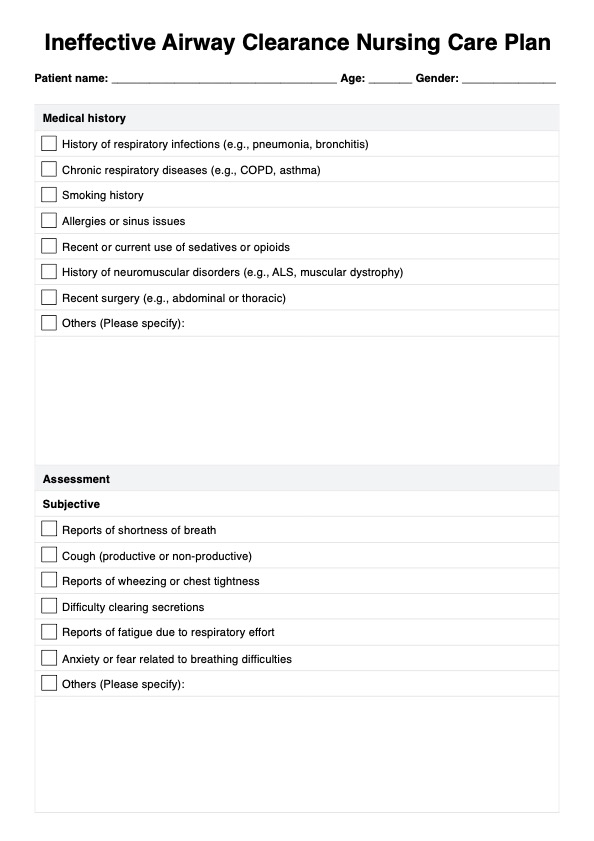A nurse should reevaluate the care plan if there are changes in the patient's respiratory status, lack of improvement in symptoms, or if new complications arise that may affect airway clearance.

Ineffective Airway Clearance Nursing Care Plan
Ineffective airway clearance can hinder breathing and oxygenation. Discover effective nursing care plans and interventions to enhance patient respiratory health.
Use Template
Ineffective Airway Clearance Nursing Care Plan Template
Commonly asked questions
The primary goals include improving airway patency, enhancing the effectiveness of coughing, increasing oxygenation, and reducing the risk of respiratory infections.
Nurses can assess airway clearance by observing breathing patterns, listening for abnormal lung sounds, checking oxygen saturation levels, and evaluating the effectiveness of the cough reflex.
EHR and practice management software
Get started for free
*No credit card required
Free
$0/usd
Unlimited clients
Telehealth
1GB of storage
Client portal text
Automated billing and online payments











